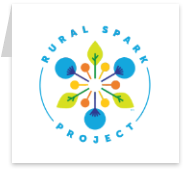RURAL SPARK PROJECT™ IGNITES.
BIG NEWS FOR RURAL STEM EDUCATION!
Research shows rural school grads are less likely than non-rural peers to have completed high school science classes, and that many rural schools struggle to attract and retain science teachers, resulting in less STEM-focused education.*
Through a grant to Project Lead The Way (PLTW) we aim to change that. Astellas USA Foundation provides funds for much-needed support to rural teachers in their efforts to inspire future scientists. Through teacher training and creating exciting hands-on learning opportunities, we seek to spark big thinkers in the classroom and in the community. Our funding for PLTW programming aims to help educate, inspire and empower career- and college-bound students, ultimately enhancing the economic well-being of all kids and all communities.
After awarding $1 Million to PLTW for our Rural Spark Project in November 2016, rural Illinois schools were encouraged to apply for the programming. Following these applications, 26 schools received funding to launch Project Lead The Way STEM curriculum in the fall 2017 semester. Additional grant funds are still available through early 2018 to schools that qualify. See the Project Lead The Way (PLTW) website for more grant application details.
SEE WHERE WE’RE SPARKING EDUCATION, INSPIRATION & EMPOWERMENT!
Where We Are Making A Difference
Astellas USA Foundation’s Rural Spark Project collaborates with Project Lead The Way (PLTW), to bring STEM education in computer science, engineering and biomedical science to 26 rural Illinois middle and high schools. These programs are made possible through $1 million in multi-year grant funding from Astellas USA Foundation, which will cover teacher training, curriculum and classroom equipment. By providing these rural schools with proper training and resources, students are given the opportunity to develop interest and experience in STEM fields.
FACT: In 2009, 20 percent of rural high school grads took biology, chemistry and physics compared to 32 percent in city schools and 39 percent in suburban schools. Why? Many rural schools struggle to attract and retain STEM teachers.*
*Original source: National Center for Education Statistics “The Condition of Education” (2014)


